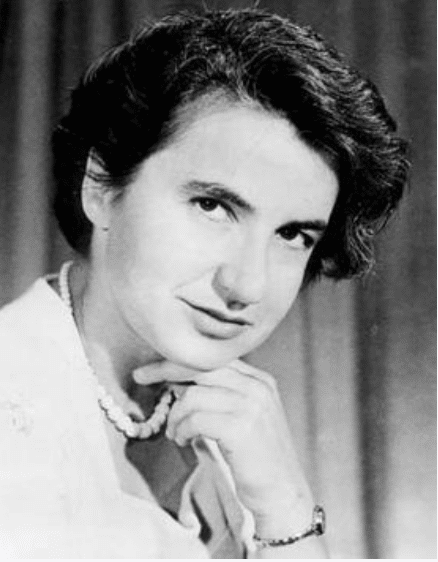
Rosalind Franklin was born on July 25, 1920, in Notting Hill, London, UK, At age six, she joined her brother Roland at a private day school in West London where she displayed a special aptitude for arithmetic. By age 11 she was enrolled in St. Paul’s Girls’ School in Hammersmith, west London where she excelled in the sciences and language. On graduation, she studied at Newnham College, Cambridge, specializing in physical chemistry and by 1941 she had earned a degree in Natural Sciences. Newnham College awarded her a fellowship for post graduate research, but after a year of dissatisfaction with her thesis supervisor, she left the College to conduct research on coal and carbon for the British Coal Utilisation Research Association during World War II.
In 1947, Rosalind Franklin began her doctoral research at King’s College London under the supervision of J.D. Bernal, a prominent crystallographer. She focused on X-ray diffraction techniques to study the structure of complex materials, such as coal and graphite. In 1951, her expertise in X-ray crystallography led her to study DNA fibers and the structure of DNA. At the same time, James Watson and Francis Crick at the Cavendish Laboratory in Cambridge were also exploring the DNA molecule’s structure. Franklin’s X-ray images, particularly Photograph 51 taken by her student Raymond Gosling, influenced Watson and Crick in proposing the double-helix structure of DNA.
Unfortunately, the unauthorized use of this photograph and her data by Maurice Wilkins (another scientist at King’s College London) without her knowledge or consent, created a tense atmosphere. Additionally, Franklin faced gender-based discrimination, significantly affecting her interactions with some male colleagues. When Watson and Crick were awarded the Nobel Prize in Physiology or Medicine in 1962, Rosalind Franklin’s contributions to this discovery were not fully acknowledged. Watson suggested that Franklin should have ideally been awarded a Nobel Prize in Chemistry along with Wilkins but Rosalind Franklin had died in 1958 of ovarian cancer, and the Nobel Committee rarely made posthumous nominations.
Although Franklin’s contributions to the discovery of the structure of DNA were not widely recognized during her lifetime, scientists gradually recognized the significance of her research and in April 2023, scientists uncovered new evidence supporting the assertion that Rosalind Franklin was, indeed, a contributor and “equal player” in the discovery of the double helix structure of DNA.
Rosalind Franklin’s story has inspired many to advocate for women’s rights and equal opportunities in science. She is remembered as a brilliant scientist whose dedication and groundbreaking research laid the foundation for our understanding of DNA and the molecular basis of life.
